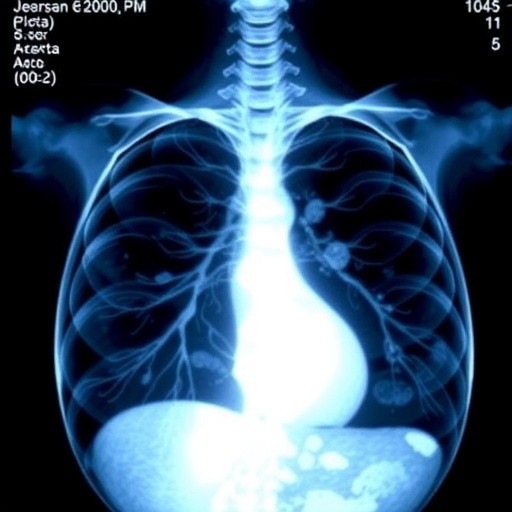Lung ultrasound has recently emerged as a revolutionary tool in the realm of neonatal and pediatric respiratory care, presenting a significant shift in how clinicians approach the diagnosis and management of respiratory disorders in young patients. Historically, the assessment of infant and child respiratory conditions relied heavily on traditional imaging techniques such as chest X-rays and computed tomography scans. However, the introduction of lung ultrasound technology is not only refining diagnostic capabilities but also enhancing patient safety by eliminating unnecessary radiation exposure.
The growing adoption of lung ultrasound is largely attributed to its non-invasive nature and the portability of ultrasound machines that enable clinicians to conduct exams at the bedside. This immediacy allows for prompt decision-making crucial in emergency situations, where timely assessment of respiratory conditions can make a profound difference in outcomes. As practitioners gain enthusiasm for this technique, numerous studies have emerged showcasing its efficacy and reliability, reinforcing its place in pediatric healthcare.
One of the primary benefits of lung ultrasound is its ability to visualize lung pathology in real-time. Clinicians can identify context-specific abnormalities such as pneumonia, atelectasis, and pleural effusions with remarkable detail. This capability is particularly significant in neonates, whose anatomical structures and pathologies demand precision and accuracy during assessments. Advanced algorithms and machine learning techniques are increasingly being integrated into ultrasound systems, further enhancing diagnostic accuracy and support in image interpretation.
Transitioning from traditional imaging modalities to lung ultrasound also addresses critical concerns about the exposure of pediatric patients to ionizing radiation. This is particularly crucial given the increased susceptibility of young tissues to radiation’s harmful effects. Parents and caregivers are often understandably apprehensive about the long-term effects of radiation on their children, and the opportunity to eliminate this risk through lung ultrasound is a significant advancement in pediatric medicine.
Moreover, lung ultrasound offers a unique capability to monitor dynamic changes in lung conditions over time. Real-time imaging allows clinicians to assess the effectiveness of therapeutics or interventions instantaneously, paving the way for personalized treatment options rooted in precise data. This is particularly beneficial in managing chronic respiratory conditions in children, enabling healthcare providers to tailor interventions based on individual responsiveness to existing treatment regimens.
As the medical community continues to embrace lung ultrasound, training programs have emerged to elevate proficiency among healthcare professionals. Specialized curriculum modules are being integrated into medical and nursing schools, focusing on enhancing ultrasound skills, interpretation, and application in clinical settings. This educational emphasis is fostering a new generation of practitioners equipped to leverage technology and improve patient care outcomes.
Despite its advantages, integrating lung ultrasound into standard practice is not without challenges. Clinicians must become adept at differentiating between various lung pathology presentations and understanding ultrasound’s limitations. Furthermore, establishing standardized protocols for lung ultrasound in pediatric care is essential to ensure consistency, reliability, and acceptance across healthcare settings. Ongoing research and collaboration between specialists and educational institutions could help pave the way for widely accepted practices.
Looking forward, the implications of lung ultrasound technology extend beyond immediate clinical benefits. Its implementation could signal a transformative phase in pediatric healthcare, promoting cost-effectiveness by reducing the need for more invasive procedures and prolonged hospital stays associated with respiratory complications. This promotes not only clinical efficiency but also emphasizes the importance of preventative care measures in pediatrics.
In regions with limited access to advanced imaging facilities, ultrasound technology holds immense promise. The portability and relatively low cost of ultrasound machines can transform how respiratory health is managed, ensuring that essential diagnostic tools reach vulnerable populations typically underserved in healthcare settings. This democratization of healthcare technology can enhance outcomes and save lives in children worldwide.
As legislative bodies and health organizations advocate for the integration of lung ultrasound guidelines, the coordinated efforts among professionals will be vital. Establishing a spectrum of standardized guidelines will promote uniformity in practice, enhancing the technology’s impact and fostering broader acceptance in healthcare systems globally. Investment in research and development will also be fundamental in evolving the capabilities of ultrasound technology and ensuring it meets the ever-changing needs of pediatric care.
In conclusion, lung ultrasound presents an exciting frontier in neonatal and pediatric respiratory health. Its non-invasive nature, ability for real-time assessment, and elimination of radiation exposure represent a significant breakthrough in how respiratory conditions are diagnosed and managed in children. As the medical community embraces this technology, ongoing research, education, and collaboration will be essential to fully realize its potential. The echoes of change are becoming increasingly audible, heralding a new era of respiratory care that places the well-being of young patients at the forefront.
Subject of Research: Lung ultrasound in neonatal and pediatric respiratory care.
Article Title: Echoes of change: lung ultrasound revolutionizing neonatal and pediatric respiratory care.
Article References:
Sameshima, Y., García-Bayce, A., Oranges, F. et al. Echoes of change: lung ultrasound revolutionizing neonatal and pediatric respiratory care.
Pediatr Radiol (2025). https://doi.org/10.1007/s00247-025-06300-8
Image Credits: AI Generated
DOI: https://doi.org/10.1007/s00247-025-06300-8
Keywords: Lung ultrasound, pediatric care, neonatal respiratory health, non-invasive diagnostics, radiation safety.




